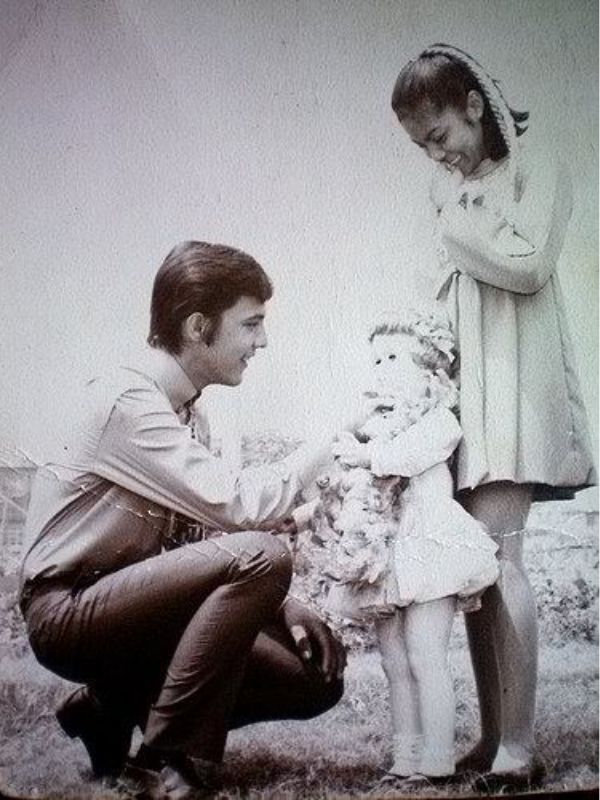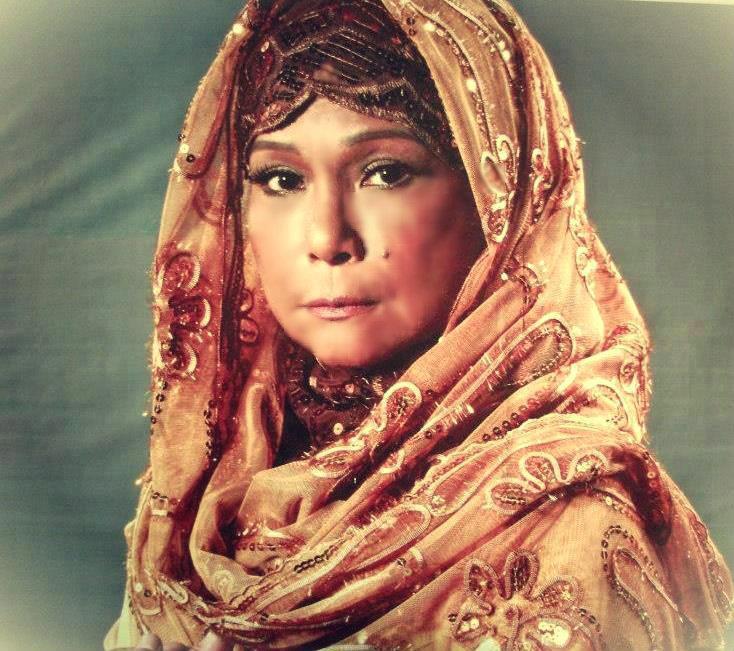Here’s a peek into Nora Aunor’s remarkable journey as a singer and actress.

Nora Aunor won in Tawag ng Tanghalan in 1967, and became a film icon when she headlined Himala in 1982.
PHOTO/S: File
It’s safe to say there will never be another Nora Aunor—a singular force in Philippine entertainment whose legacy spans music, film, television, and even today’s headlines.
She will always be a relevant cultural icon, and every generation knows her name.
In an industry long dominated by mestizas, tall beauties, and those born into privilege, Nora broke every mold.
Petite, brown-skinned, and an undeniable probinsiyana—she defied the traditional standards of stardom, and became its most enduring face.
Her rise as the country’s Superstar was not just a personal triumph—it was a victory for all brown-skinned women.
NORA AUNOR’S HUMBLE BEGINNINGS
Life was not easy for the young Nora.

Nora Aunor grew up in Iriga, Camarines Sur.
Photo/s: File
She was born in a small barrio in Iriga, Camarines Sur, on May 21, 1953, to Eustaquio Villamayor and Antonia Cabaltera.
She had nine siblings, and they lived in a small nipa hut, lit only by a gasera at night.
Sometimes, she went to school barefoot.
To help her family make ends meet, young Nora sold peanuts and bottled water on buses and at train stations.
What she lacked in material wealth, she made up for a thousandfold with raw, undeniable talent.
In 1965, at just 12 years old, Nora won both the Darigold Jamboree Singing Contest and The Liberty Big Show amateur singing contest in Naga City.
That boost of confidence inspired her to enter the big leagues: national singing contests.
Her first attempt at Tawag ng Tanghalan ended in defeat.
But instead of backing down, she came back even more determined.
In 1967, at just 14 years old, Nora returned and triumphed, winning the Tawag ng Tanghalan Grand National Finals.
She took home a cash prize of 200 pesos—roughly equivalent to 21,000 pesos in today’s money (2025) when adjusted for inflation.
NORA AUNOR ON CARVING A NAME IN SHOWBIZ
Nora’s victory in Tawag ng Tanghalan didn’t catapult her to instant superstardom—
but it paved the way.
After a string of television guest appearances, Sampaguita Pictures took a chance on the young, promising singer.
Her first movie appearance was in All Over the World, dubbed as Sampaguita’s biggest musical movie of 1967.
Nora was a part of the supporting cast, behind lead stars Eddie Gutierrez and Josephine Estrada.
She once again earned 200 pesos for the minor singing role.
Nora also had supporting or guest roles in six other movies in 1967: Way Out in the Country, Cinderella a-Go-Go, Pogi, Sitting in the Park, and Ang Pangarap Ko’y Ikaw.
The following year, 1968, was a lot busier.
She bagged supporting roles in three movies.
There’s the horror comedy Dobol Wedding and the musical comedy Bahay Kubo, Kahit Munti.
Then there’s May Tampuhan Paminsan-minsan, the first movie where Nora’s name appeared at top billing on the official movie poster.
Her star continued to rise in 1969.
She was one of the nine rising talents featured in the musical film 9 Teeners, which premiered on January 1.
Soon after, she starred in Young Girl alongside Tirso Cruz III—marking the birth of the iconic Guy and Pip love team, one of the most enduring and beloved pairings in Philippine showbiz history.
GUY AND PIP
Ate Guy and Pip’s love team quickly captured the hearts of Filipino audiences, prompting producers to cast them in a string of films.
They first appeared as guests in Oh, Delilah and Drakulita, before headlining musical hits like D’ Musical Teenage Idols, Fiesta Extravaganza, and Teenage Escapades.
After several box-office successes in the musical genre, the Nora-Tirso tandem began transitioning to more serious and dramatic roles by 1970—further cementing their status as a powerhouse pair on screen.
They did Orang and Nasaan Ka, Inay? for Sampaguita Pictures. Both were romantic dramas.
In 1971, the power of the loveteam’s fandom flexed its power for the Guy and Pip movie, which was featured in that year’s Manila Film Festival. The musical movie was that year’s top-grosser, and it stayed in cinemas for six months.
NORA AUNOR’S ELDEST MARIA LEONORA THERESA
One of the most surreal testaments to the power of the Guy and Pip fandom was how a doll was turned into a showbiz A-lister.
The doll was named Maria Leonora Theresa, a three-foot ceramic-faced figure that was a gift from Tirso to Nora.

Nora Aunor and Tirso Cruz III with their doll Maria Leonora Theresa
Photo/s: carvin deleon on Flickr via Wikimedia
She was quickly embraced by fans as the couple’s “real” daughter.
Idolized like a living child, Maria Leonora Theresa received lavish gifts—designer clothes, jewelry, and even fan letters.
She made her own public appearances, often drawing crowds worthy of a celebrity.
In one provincial event, the doll had to be transported by armored truck.
Fans even looked to the doll’s outfits as an emotional barometer for the Guy and Pip relationship: bright, colorful clothes meant the couple was in good standing; dark clothes suggested a lovers’ quarrel.
When Nora and Tirso’s love team ended in the late 1980s, Nora returned Maria Leonora Theresa to Tirso—and with that, the doll quietly vanished from the limelight.
NORA AUNOR’s ACTING RECOGNITION
While the Guy and Pip tandem catapulted Nora to pop culture icon status, it was her work in dramatic movies that made her a fixture in Filipino cinema.
In 1972, just five years after her national singing competition victory, she earned her first Best Actress nomination from the Filipino Academy of Movie Arts and Sciences (FAMAS) for A Gift of Love.
This proved that the former water vendor was more than a novelty—she was a serious actress.
Her remarkable acting talent was again recognized a year later when she received her second FAMAS nomination for the drama Paru-parong Itim.
In 1974, she took on a formidable challenge, playing three roles in Fe, Esperanza, Caridad, which earned her a third consecutive nomination.
Then came Banaue in 1975, where Nora portrayed a strong-willed Ifugao woman—a performance that secured her fourth FAMAS nomination.
But it was in 1976 that the moment of undeniable triumph arrived.
Nora delivered what many considered her career-defining performance in Tatlong Taong Walang Diyos.
As a woman enduring war, betrayal, and grief, she earned both the FAMAS Best Actress award and the inaugural Gawad Urian Best Actress honor—a rare feat in showbiz at the time.
In the decades that followed, Nora continued to shine.
She would go on to receive 17 FAMAS Best Actress nominations, winning five, and eventually earning a place in the prestigious FAMAS Hall of Fame.
At the Gawad Urian, she made history as the most-nominated actress, with 21 nominations and seven wins.
NORA AUNOR’S INTERNATIONAL ACTING RECOGNITIONS
International critics had also recognized Nora’s acting brilliance.
So far, she is the only Filipino actress to have won international awards across five continents.
In Africa, Nora won Best Actress at the 19th Cairo International Film Festival in 1995 for The Flor Contemplacion Story, a harrowing portrayal of a Filipina migrant worker wrongly executed in Singapore.
Then in Asia in 1997, she won a Best Actress award in Malaysia for Bakit May Kahapon Pa? Here, she played a rogue gunman from the New People’s Army.
In Europe, she was honored at the 31st Festival International du Film Indépendant de Bruxelles in 2004 for the romantic drama movie Naglalayag.
In Australia, she was recognized with the Asia Pacific Screen Award in 2013, for her silent yet powerful role in Thy Womb.

Nora Aunor plays Shaleha in the internationally acclaimed Thy Womb (2012)
Photo/s: Movie Poster
Lastly, in North America, she was honored as one of the 10 Asian Best Actresses of the Decade in 2010. The awards ceremony was done in Hollywood.
NORA AUNOR: NATIONAL ARTIST IN FILM
It is undeniable that Nora’s legacy in Philippine cinema is unmatched.
With a career spanning over five decades, she has appeared in more than 180 films, covering a vast range of genres—from musical dramas and romantic tales to hard-hitting political films and socially-charged narratives.
If box office is the yardstick, the Superstar had plenty.
One of her most commercially successful films was Ina Ka ng Anak Mo (1979), where she starred alongside Lolita Rodriguez.
This mother-daughter drama became a box office hit, proving that serious, intense storytelling could resonate with the masses.
Nora also had tons of movies that critics regard as the finest in Filipino cinema.
There’s Bona (1980), where she played a naïve fan who became disturbingly devoted to a small-time actor.
There’s also Bulaklak sa City Jail (1984), where she depicted a woman incarcerated for murder.
And, of course, no one can forget Himala (1982).

Nora Aunor plays Elsa in the 1982 film Himala.
Photo/s: Screen Grab from the movie Himala
As Elsa, a supposed visionary in a drought-stricken town, Nora channeled themes of faith, disillusionment, and mass hysteria with haunting precision.
Her famous line—”Walang himala!”—has echoed across generations and has remained one of the most iconic moments in local film history.
Himala has since been restored, studied, and screened around the world, widely regarded as one of the greatest Filipino films ever made.
In recognition of her towering influence, Nora Aunor was named National Artist for Film in 2022, the highest cultural distinction in the Philippines.
NORA AUNOR AS A RECORDING ARTIST
Perhaps one aspect of Nora’s artistry that the new generation is unaware of is how much she has also contributed to the music industry.
She started as a singer after all.
In 1968, a year after her Tawag ng Tanghalan triumph, and while she was pursuing stardom in the movies, Nora signed a record with Alpha Records.
The Superstar released an astounding 260 singles—setting the record for the most in Philippine music history.
Among her many releases is a cover of “Pearly Shells,” which is regarded as one of the best-selling Filipino singles of all time.

Nora Aunor’s single “Pearly Shells” sold more than one million units–one of the biggest-selling singles in the Philippine music industry.
Another best-selling single is her cover of “Moonlight Becomes You,” which is her winning piece in Tawag ng Tanghalan.
Nora also recorded several Filipino folk songs, including Leron Leron Sinta, Sarung Banggi, and Dandansoy.
The Superstars has earned several awards for her work in the music industry, including an Album of the Year from the Awit Awards in 1971, for the album The Phenomenal Nora Aunor.
She also received a Lifetime Achievement Award in 2011 from the Star Awards for Music and a Dangal ng OPM Award in 2011 from the Organisasyon ng Pilipinong Mang-aawit.
A singer with a voice that could hush a crowd, an actress whose eyes could speak volumes, and an international icon whose work echoed far beyond Philippine shores—Nora Aunor’s impact isn’t just unparalleled; it’s intricately woven into the very fabric of Filipino culture.
